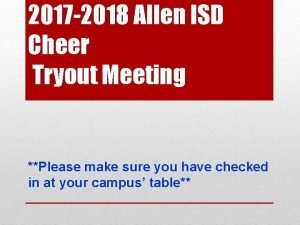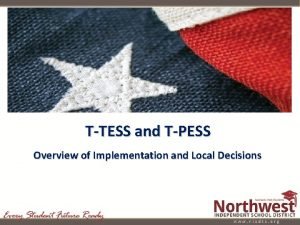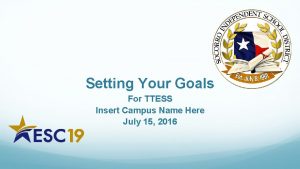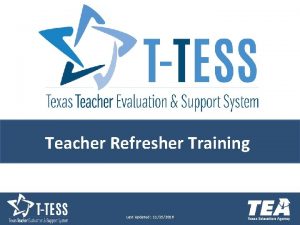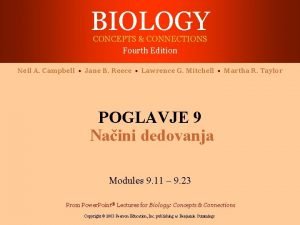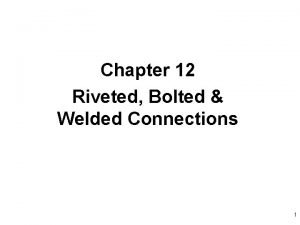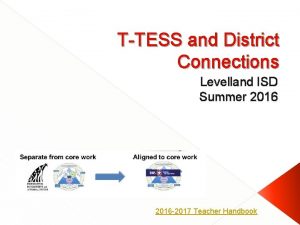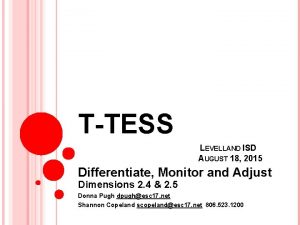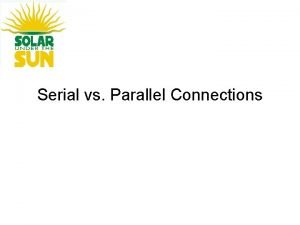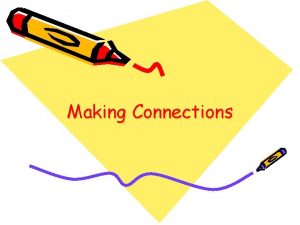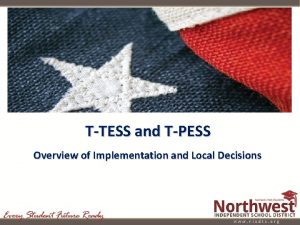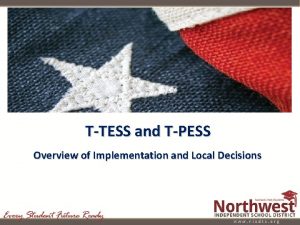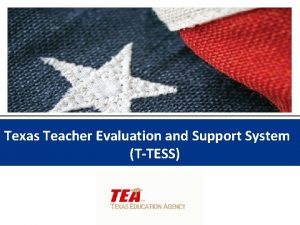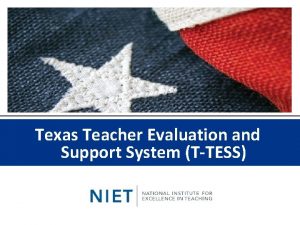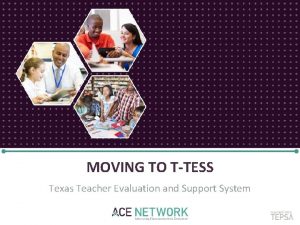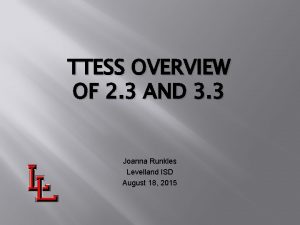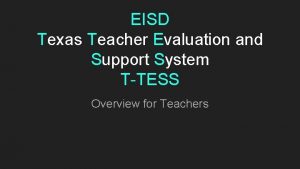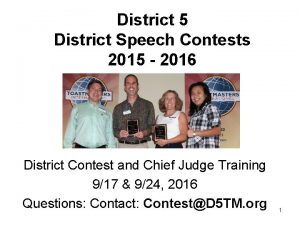TTESS and District Connections Levelland ISD Summer 2016















- Slides: 15

T-TESS and District Connections Levelland ISD Summer 2016 -2017 Teacher Handbook

District Connections What do we already practice in Levelland ISD that supports success with T-TESS?

Lesson Frame: We will analyze district connections/practices to support T-TESS dimensions. You will demonstrate an understanding of how current district practices align to T-TESS

Domain I – Standards and Alignment Dimension 1. 1 The teacher designs clear, wellorganized, sequential lessons that reflect best practice, align with the standards, and are appropriate for diverse learners.

T-TESS Alignment to Practice The teacher clearly understands what the standards specifically mean for the grade level and subject taught, including a common understanding among teachers responsible for teaching these standards. • The verbs in the standards define the observable actions expected in classroom instruction and how students are expected to process the content. They are arranged in order of complexity in thinking. • The standards and objectives are communicated in multiple ways so that students are clear about what they are supposed to know and be able to do as a result of the lesson. •

T-TESS Alignment to Practice Key Questions: 1. How are the standards studied and understood both vertically and horizontally? 2. Why is aligning the lesson objectives to the standards important? 3. Which standards seem the most difficult for students to master? Why do you think students are having difficulty mastering those in particular? 4. Which sub-objectives need to be taught for students to master specific standards? 5. What was the connection between the students’ mastery of the learning objective and the lesson plan?

Proficient Level Descriptors Descriptor 1 -- All measurable goals aligned to state content standards. Clarification: Learning goals presented during instruction are derived from the state content standards as outlined in the district scope and sequence and also include other standards which address the unique learning needs of individual and groups of students, e. g. , the ELPS, CCRS, etc.

Descriptor 1 -- All measurable goals aligned to state content standards Planning effective lessons aligned to the standards is dependent upon the teacher’s ability to create and communicate clearly defined learning goals, objectives, and outcomes. The learning goal refers to the broader definition of student competence, e. g. , the student will demonstrate competence in critical thinking, problem solving, etc. This descriptor is foundational to all other descriptors, as it provides the basis for instructional design. When the teacher is clear about the learning goals, lessons are developed and implemented to address clear, well-articulated learning objectives and outcomes that are rigorous, challenging and presented in a manner that allows the teacher to measure how student learning is occurring.

Descriptor 1 -- All measurable goals aligned to state content standards As the standards are displayed and referenced throughout the lesson, students are also clear about learning expectations. This creates the alignment between the learning goal(s), objective(s) and outcome(s). For this to occur, a teacher must clearly define the learning objective for the lesson and then maintain the focus of the lesson on this objective, i. e. , “What are students expected to know and be able to do as a result of this lesson? ” This may require the teacher to redirect students’ comments or provide academic feedback which refocuses the students on these learning outcomes.

Other Descriptors -Descriptor 2 -- All activities, materials and assessments: - are sequenced are relevant to students’ prior understanding integrate other disciplines provide appropriate time for student work, lesson and lesson closure are vertically aligned to state standards are appropriate for diverse learners

Other Descriptors -Descriptor 3 -- All objectives aligned and logically sequenced to the lesson’s goal. Descriptor 4 -- Integration of technology to enhance mastery of goal(s).

Alignment to Practice Lesson Frame – Fundamental 5 TEK S Instructional Focus Document and District/Campus Connections Possible Vertical Alignment Teacher Well prepared. Possible Student Behaviors Participate in Document – TEKS Behaviors for Pre and Post PLC’s using TEKS Resource System Conference Resource System Reference the Lesson Frame TEK S TEKS goal setting to monitor progress Varied opportunities to demonstrate understanding

Additional Support Suggestions Use Forethought in Eduphoria to build missing Scope and Sequence TEKS Support for Non-Core Subjects Use PLC time to integrate Core and CTE/Elective TEKS Build strong technology supports Connect learning across content areas

In Your Groups -1) 2) 3) 4) 5) Remove the information from your folders. Identify the Domain and Dimension Statements for your group will. Review each indicator together as a group. Identifying the District/Campus Connections as you go. Design/Create a visual for your Dimension Prepare to share with the big group what you discovered.

Levelland ISD & T-TESS � Continuous improvement cycle � Strengthen our current initiatives because they are well-aligned � Well prepared to meet the demands of TTESS
 Cheer judges score sheet
Cheer judges score sheet Tpess training
Tpess training Examples of t tess goals for teachers
Examples of t tess goals for teachers T-tess reinforcement and refinement examples
T-tess reinforcement and refinement examples Lodi summer school
Lodi summer school Cdci binghamton
Cdci binghamton Balanced wye wye connection
Balanced wye wye connection Chapter 22 transoceanic encounters and global connections
Chapter 22 transoceanic encounters and global connections Chapter 8 china and the world
Chapter 8 china and the world Chapter 8 china and the world east asian connections
Chapter 8 china and the world east asian connections Chapter 23 transoceanic encounters and global connections
Chapter 23 transoceanic encounters and global connections Chapter 22 transoceanic encounters and global connections
Chapter 22 transoceanic encounters and global connections Chapter 22 transoceanic encounters and global connections
Chapter 22 transoceanic encounters and global connections Kariogram človeka
Kariogram človeka Bolted and riveted connections
Bolted and riveted connections Fleishman career center
Fleishman career center
